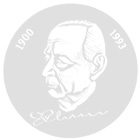Channel Codes for Digital Optical Recording
The public perception of technology during the last decades was shaped largely by the remarkable advances in audio and video recording. Not surprisingly, the Eduard Rhein Foundation has a long history of recognizing outstanding work by engineers and scientists who advanced recording technology. The very first Eduard Rhein Award recognized pioneering contributions to magnetic video recording, and many subsequent prizes were awarded for audio or video recording. Eduard Rhein was personally interested in LP (Long Play) vinyl audio recording for which he contributed a patent that specified a method for encoding a new groove with respect to a previously recorded groove. Several of the Eduard Rhein Ring of Honor recipients were involved with audio recording, including Herbert von Karajan who plays an indirect and amusing role in the story of the 2014 Eduard Rhein Technology Award.
The first practical audio recording device is generally attributed to Thomas Edison who invented and patented the phonograph in the 1870s. Stereo LP technology improved sound quality in the 1950s and 1960s. Digital and optical recording began in the 1970s and its fantastic commercial impact over the past decades owes much of its success to Kees Schouhamer Immink, the winner of the 2014 Eduard Rhein Technology Award.
Immink joined Philips Research Labs in Eindhoven in 1967 where he worked in several groups including an optics group. In 1973, he began to work on servo systems and electronics for developing the first commercial optical disc storage medium called a LaserDisc. The LaserDisc recorded audio via a series of ”pits” and ”lands” on the surface of the disc, and the reflection of a laser’s light was used to read the information.The marketing of the LaserDisc was unfortunately a failure: consumers were not interested due to its size and unreliability. The experience gained was important for the next step, however, when Philips and Sony joined forces to develop a world digital audio disc standard. Immink was the lead Philips engineer in the design group and he invented its ”channel” code and synchronization protocol. The channel includes a servo system that follows the tracks of alternating pits and lands in three dimensions on the disc surface. Inevitably, the surface is damaged by dust, fingerprints, and scratches that disrupt the servo functions and cause the servo to make errors, skip tracks, or get stuck. Immink’s code limits the number of successive pits and lands, and shapes the ”spectrum” of the servo signal. These features keep the servo on track and substantially enhance the disc handling and playability. Furthermore, his code increased the efficiency of the existing code by a large margin. The Compact Disc (CD) was born.
The CD revolutionized the consumer electronics market and introduced digital technology to the general public. Well over 200 billion CD audio discs have been sold worldwide. The CD evolved into many generations of digital technologies, including the CD-R, DVD, MiniDisc, Blu-Ray Disc, and others. Immink designed the channel codes for the DVD, he was the main engineer behind the Blu-Ray Disc and he designed its disc format. His contributions to digital recording technology were recognized by many prestigious awards including the IEEE Edison Medal in 1999 and an Emmy in 2003.
Finally, back to Karajan. A fascinating story that is often repeated is that the 120 mm diameter of the CD was chosen by the wife of a Sony Vice President to fit the recording of Beethoven’s Ninth Symphony. Herbert von Karajan had a recording of 66 minutes that would have fit on a smaller format. However, the longest recording was by Wilhelm Furtwängler that lasted for 74 minutes. As a result, the 120 mm format was chosen because it had a maximum playing time of 74 minutes and 33 seconds. Unfortunately, or fortunately, the real reason is more practical: the competing diameters were Sony’s 100 mm design and Philip’s 115 mm design. In fact, Immink’s code would have made possible using even the 100 mm size for Furtwängler’s recording. Instead, the 120 mm diameter was chosen to ensure that neither company would have a competitive edge in the new market. The story does not end there, however. The engineering team used the extra space to improve the production margins of CD discs and players by increasing the dimensions of the pits, lands, and tracks. This made the CD easier to read and cheaper to build.
Prof. Dr. Gerhard Kramer
Munich Techn. University
